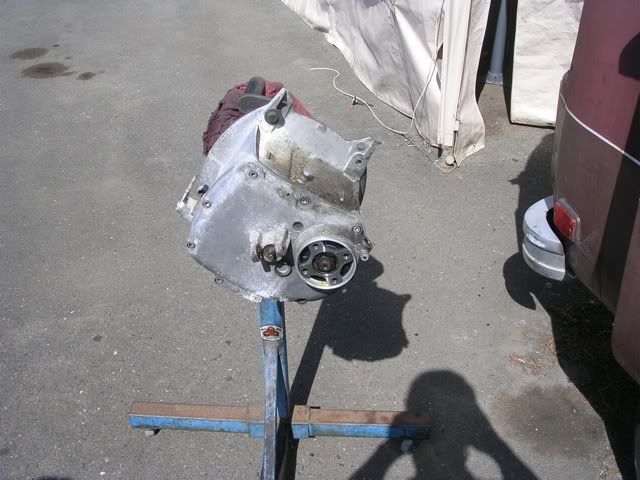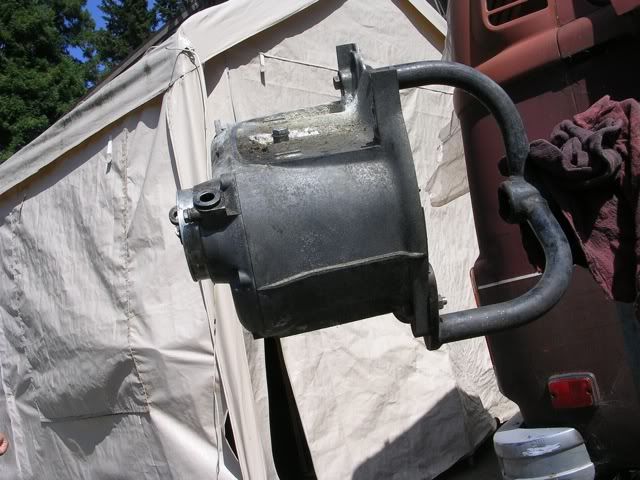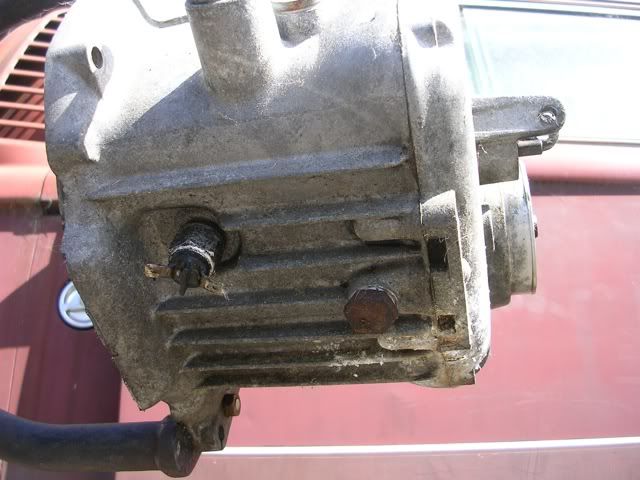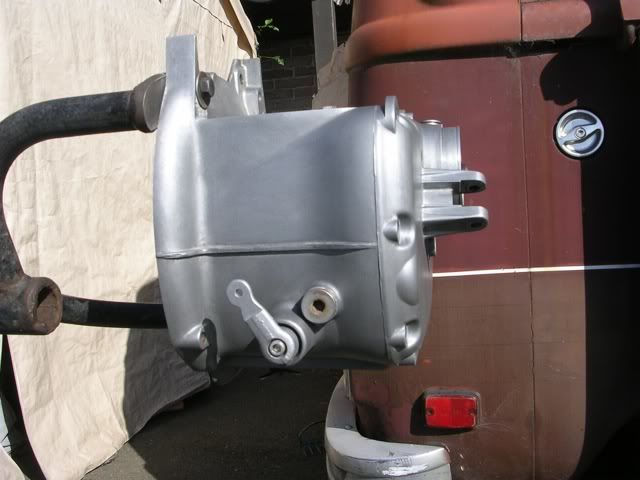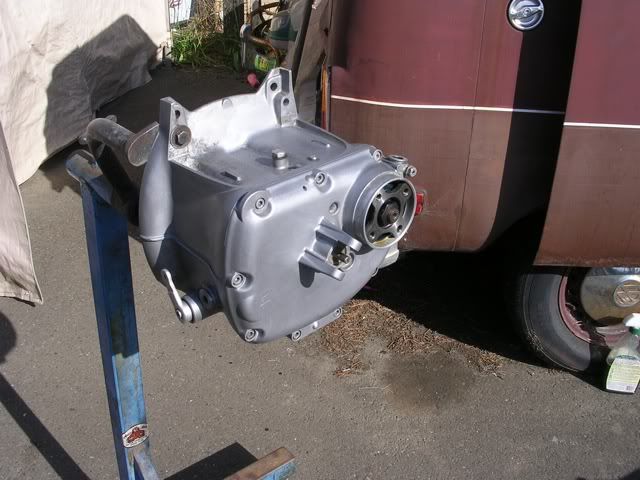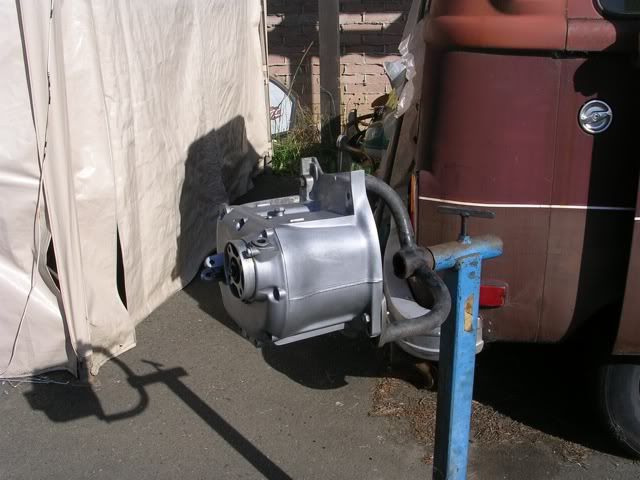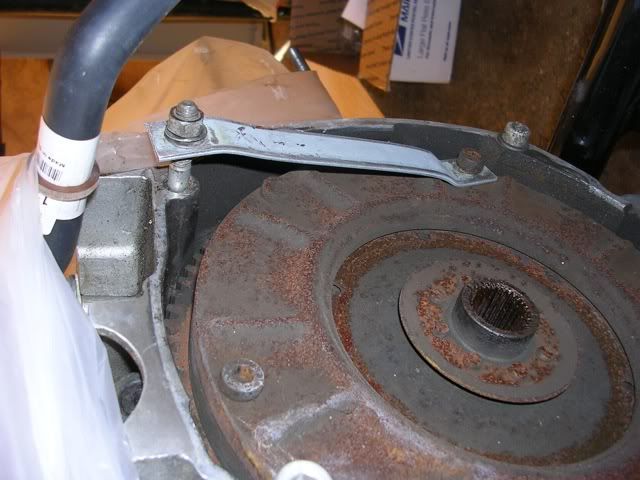Page 5 of 42
Re: Woo Hoo! A Big Project!
Posted: Tue Aug 24, 2010 10:48 pm
by melville
So today's project after work was getting the brake cable in place. I'm gathering that the cable adjustment is intended to get the MC piston in the right spot. Does the tool kit that would have come with the bike in fact have a gauge to measure such position? And is the goal to get the inside of the groove seen below in the same plane as the end of the MC casting?

If so, I think I'm not quite there yet:

I've got a wee spot of adjustment left on the cable, maybe 1 to 1.5 mm. Beyond that I may need the cable to stretch a bit.
Re: Woo Hoo! A Big Project!
Posted: Wed Aug 25, 2010 9:55 pm
by George Ryals
The factory gauge is 0.25 mm (0.010"). They did come in the tool kits. The reason for the gauge is to ensure that there is sufficient "slack" in the system to allow the piston to stop against the circlip and not against operating mechanism. There is a crappy illustration of the procedure on page 61 of the Clymer's manual. If the piston does not come all the way back to the circlip, it may not uncover the hole that allows fluid to return to the master cylinder to releave the line pressure.
Re: Woo Hoo! A Big Project!
Posted: Sat Aug 28, 2010 9:23 pm
by melville
Re: Woo Hoo! A Big Project!
Posted: Sat Aug 28, 2010 10:43 pm
by gspd
On the master, tighten the cable until you just start to feel a resistance when spinning the rod, and then back it off just a hair so the rod spins freely.
To remove the clutch, you need 3 bolts about 1" longer than the stock ones, and 3 nuts.
Re: Woo Hoo! A Big Project!
Posted: Sun Aug 29, 2010 1:54 am
by ME 109
Very nice indeed Melville! It looks like a new one.
Re: Woo Hoo! A Big Project!
Posted: Sun Aug 29, 2010 7:32 pm
by melville
Now on to the clutch itself. After a run to the hardware store where I managed to get some 40mm bolts & nuts, I removed the clutch. The clutch was very abrupt and engaged with a "squartch" sound the little bit I ran it last year. Found out a bit about the abruptness--when it came apart, the pressure plate was stuck to the clutch disc:
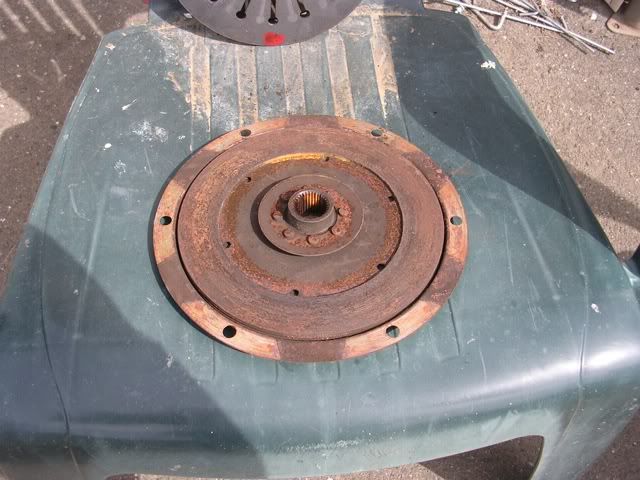
They ain't coming apart! Also, the contact area between the pressure plate and the spring was DRY, presumably also contributing to the "squartch."
Re: Woo Hoo! A Big Project!
Posted: Mon Aug 30, 2010 10:25 pm
by melville
Pistons are here! One question--as the cylinders are getting bored and my machinist says he can give me any skirt clearance, should I go for the low figure or the high figure, which per Haynes is .0014" to .0018"?
My Haynes also covers other models, and I'm wondering what makes an R75/7 so different that the clearance specs are .0007" to .0016"?
Obligatory tight/loose skirt jokes here. I personally don't have a preference, and Mrs. melville generally wears pants, occasionally THE pants.
Re: Woo Hoo! A Big Project!
Posted: Mon Aug 30, 2010 11:24 pm
by gspd
Are you talking about piston to cylinder clearance?
If so, somebody messed up on the decimal point.
.0007" and .00016" are both way too tight, it'll seize in minutes.
I work in metric;
I'd shoot for 0.2mm. (0.1mm for nikasil)
Up to 0.5mm will run fine
Ring gap MUST BE AT LEAST 0.1mm. a bit more, say 0.15mm is safer.
Not sure what 'the book' says.
Re: Woo Hoo! A Big Project!
Posted: Tue Aug 31, 2010 3:58 am
by Max Headroom
I gave my R90S 0.06 - 0.07mm piston-to-skirt clearance. No problems with seizing or running hot. Imperial equivalent: 0.0025" - 0.003"

Re: Woo Hoo! A Big Project!
Posted: Tue Aug 31, 2010 6:57 am
by gspd
Max Headroom wrote:I gave my R90S 0.06 - 0.07mm piston-to-skirt clearance. No problems with seizing or running hot. Imperial equivalent: 0.0025" - 0.003"

I'd personally only go that tight on a water-cooled engine.
We experienced (ancient history) that less than 0.2mm or so on air-cooled VW sand drag engines produced less power and more heat, and often seizures/scoring on the first 1/8 mile run.
I think this was because the pistons expanded faster than the cylinders.
Hard plating (Nikasil equivalent) directly on ALUMINUM cylinders seemed to alleviate the situation and allow tighter clearances with no down side except the exorbitant cost.
What does the 'BMW book' recommend?
I'd wager it's in the 0.2mm range for iron bores and 0.1mm for Nics.
Any takers?




